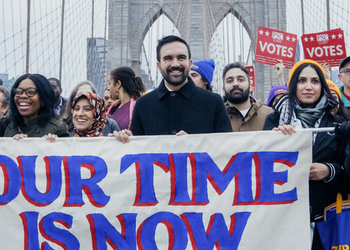The new Ukrainian Law «On culture,» which is designed to reform the provision of cultural services in Ukraine, recently came into force. Even though the decentralization reform started back in 2014, changes in the field of cultural provision began in practice only in 2019. The reform focuses primarily on the aspect of economic indicators and optimization of cultural services and cultural institutions. This article reviews the key events of the culture reform, considers the appropriateness of using the concept of «cultural services,» the issue of reorganizing cultural institutions, and the risks and potential problems that characterize the reform.
The article in Ukrainian is available here.
Public policies: How the decentralization and culture reforms intersect
The decentralization reform, which has been underway in Ukraine since 2014, encompasses many different processes. It coincides with reforms in various fields which need to be coordinated with the decentralization reform. One of them is the reform in the field of culture. The passport of the Decentralization Reform in the Field of Culture recommends the distribution of powers between various government levels in terms of managing cultural facilities. The purview of the central government includes national or state cultural institutions, the Ukrainian Cultural Foundation, institutes and higher education institutions in the field of culture; the regional level includes concert and theater institutions, library institutions, art palaces, etc.; the local level manages multifunctional culture centers. The reform passport has already codified the need for high-quality cultural services for the population. And although the passport detailed the implementation plan for 2017–2020, the reform was launched in full only in 2019.
That was when the Concept of the Reform for Providing the Population with Cultural Services was approved. The Concept described several goals of the reform: adopting the minimum standards for providing citizens with culture services, reforming the financial support of the system of cultural service provision, modernizing the existing infrastructure, creating the conditions for skilled staff provision, developing the monitoring and quality assessment of cultural service provision. The same year, it was announced that communities would be selected for participation in the competition Decentralization and the Cultural Service Reform.
The reform began to be publicly discussed already in 2020, when the Ministry of Culture and Information Policy developed the draft standards for providing the population with culture services. This resulted in the updated edition of the Ukrainian Law «On culture,» which came into force on 4 December 2021 and legally codified the definitions of a «cultural service,» a «basic set of cultural services,» and a «cultural service center.» The Ministry’s website also offered to submit electronic suggestions for the draft document in May 2020, but there was no broad public discussion at the stage of development. According to the Ministry of Culture and Information Policy (hereafter referred to as MCIP), the reform will create opportunities for providing citizens with high-quality cultural services, modernizing the cultural infrastructure and improving the capacity of communities to provide cultural services.
«Cultural services» replace «cultural benefits»
A «cultural service,» according to the updated edition of the Law «On culture,» is «the actions of individuals and/or legal entities that engage in cultural activities, aimed at meeting the cultural, intellectual human needs, ensuring the creative, spiritual development of an individual, which have a defined value and are consumed in the process of providing (carrying out) these actions.» The previous edition defined the process of meeting cultural needs as a «cultural benefit,» namely the goods and services produced in the field of culture in order to meet the population’s needs. The Law also introduces the Minimum Standards for Providing the Population with Cultural Services, which include the basic set of cultural services; the requirements for the resource support of the basic set of cultural services; the indicators and criteria for assessing the quality of the cultural service provision. It is noted that «the quality of a cultural service is defined by a set of properties which characterize the process and result of its provision and serve as the conditions for the capacity to meet certain needs of a cultural service recipient.» The indicators and criteria of quality must be approved by the central executive government body, and the Law itself does not list them. So it is unclear at the moment how «meeting the needs of a cultural service recipient» will be measured.
The so-called set of basic cultural services involves free-of-charge access to reading and information as well as to opportunities for creative self-expression. However, access to films, museum items and art education is provided on the basis of a co-payment.
Read more:
World in a Window: how the city social services work with older people in Kyiv
The decentralization reform itself posits that communities must provide their residents with high-quality services. However, can all the activities which provide for the population’s cultural needs really be defined as «cultural services»? The term «services» has recently come into use to indicate any kind of public provision: health care, social security, culture. The concept of a «service» imposes the framework of measurability and limited volume and value which can be calculated as its monetary equivalent, which is a movement towards market logic. The goal of this is probably to regulate the ensuring of the population’s cultural needs, to optimize the use of public money, and to improve the administration of the field. The argument about the importance of culture for the economy is often used to advocate for and draw attention to the field of culture, and to assess the value of cultural workers’ labor better and, accordingly, to increase their pay. At the same time, not all activities that aim to meet cultural needs, ensure creativity and self-expression have a monetary value and can be evaluated and calculated in market terms, quantified and placed within the framework of effective bureaucracy and administration. There is a threat that this logic will be used for the purposes of optimization or money-saving but will not be used in full to calculate the value of culture, its long-term and hidden impacts on the development of individuals and society, as well as the value of the labor of cultural workers and the resources required to obtain training and constantly improve their skills, which is not possible without proper labor conditions, funding and equipment of cultural facilities. The Law does not say what will happen to cultural institutions if they do not meet the clear criteria and indicators or cannot prove their effectiveness. We can assume that this will lead to their shutdown or limitations on their work.
Reorganization of cultural institutions
As a part of the decentralization reform, cultural institutions are transferred from district councils to the newly established territorial communities. According to the MCIP, there are cases when district councils attempt to shut down cultural institutions even though the procedure for this is not simple. Closing a cultural institution is only possible if the community decides that there is a need to do it and if they can justify it. Then the decision needs to be made by the Ministry of Culture and Information Policy.
Funding for cultural institutions is entirely within the purview of local government bodies without specific subsidies. At the same time, some of the cultural institutions handed over to them may be in a poor condition. Since budgets within communities are distributed in various ways, ineffective communities may not have the means to fund cultural institutions. The communities which have more funding or are managed more effectively have more opportunities to support cultural infrastructure. At the same time, in some communities, culture may remain a low-priority spending item, in contrast to infrastructure or other fields.
According to a MCIP report, only 40% of culture institutions managed by communities are properly equipped and funded. However, there is no constant monitoring to reveal the condition of cultural institutions at the moment, even though the reform involves inventorization and assessment of the condition of the basic network of cultural institutions. In addition, the pandemic has exacerbated the issue of equipping the institutions with the technological means required for remote or mixed formats of work. Some communities may not be capable of independently providing for the cultural institutions which they manage. At the same time, cultural institutions located in villages with very small populations may be shut down by their communities.
Cultural Service Centers: New facilities for meeting the cultural needs of UTC residents
The amendments to the Ukrainian Law «On culture» propose to create Cultural Service Centers. They must be multifunctional cultural institutions in convenient locations provided with skilled staff and up-to-date equipment. These facilities will provide consulting and information, access to venues and equipment for creative activities, and conditions for informal communication between residents of the territorial community. In addition, each center must be inclusive. The centers must facilitate community cohesion and be aimed at the needs and interests of community residents. By the way, the passport of the decentralization and culture program proposes to call these centers «Community Development Centers» without emphasizing services.
Each Cultural Service Center should be created on the basis of an existing cultural institution which can be reconstructed or, if needed, relocated to a new building. At the same time, there is currently no information about what should happen to other cultural institutions located in the community, since the center should only be located in one of the buildings. The Ministry of Culture and Information Policy opposes shutting down cultural institutions if there are no legal reasons for it. On the other hand, even though the cultural service centers are to be included in the basic cultural institution network, the reform aims to reorganize the cultural institution network. At the moment, there is no information on what will happen to a library or another cultural institution when one multifunctional center is created in a UTC not on the basis of one of these institutions. We can assume that these institutions may be neglected, because many communities may not have the funds to support more than one cultural institution. Especially given that a multifunctional institution may require more resources.
Even at the beginning of the reform a few years ago, there were already examples of creating culture centers in UTCs which had more than one cultural institution. One example is the Illinska UTC in Vinnytsia Region, where all Houses of Culture and libraries were united under the coordination of the Center for Culture, Arts and Aesthetic Education back in 2018.
An example of a Cultural Service Center
The pilot project for reorganizing Cultural Service Centers is currently being implemented in 7 UTCs selected in a competition. Before creating a Center, these communities must study the existing cultural infrastructure and the needs of community residents. Let us review one of these examples.
One of the selected communities is the Velykooleksandrivska UTC in Kherson Region. This community decided to locate the Cultural Service Center in the local House of Culture. The project submitted for public discussion evaluates the renovation, sanitation and landscaping of the outdoor public space at almost 40 million hryvnias. Since the area of the former House of Culture is sufficiently large, it can accommodate both outdoor and indoor activities. The plan shows that the building will host a library space, a club, an art school, an art residence and a tourist information center.
On the one hand, this center will actually be able to meet various cultural needs and facilitate the socialization of community residents within one location. On the other hand, the newly established centers will also require proper equipment for which the project does not provide funding; they may also face the fate of the existing infrastructure which deteriorated due to the lack of proper funding. In addition, there is no long-term strategic vision of the Center’s development: how it will be supported from the community budget and what will happen if the residents use some spaces less than others. Each community should conduct a preliminary analysis of cultural needs which will serve as the basis for determining what their Cultural Service Center should include. However, it is unclear to what extent this analysis takes into account the population categories targeted by certain spaces. This would allow them to understand the categories for which certain spaces are more urgent than for others.
The risks and potential problems of the reform
Lack of funding. The pilot project of creating Cultural Service Centers in 7 communities is supported by Switzerland through the Swiss Agency for Development and Cooperation. The Ukrainian Law «On the State Budget of Ukraine for 2021» approved a subsidy from the state budget to local budgets for establishing Cultural Service Centers in the amount of 200 million hryvnias. However, in order to estimate the amount required to reconstruct or build Cultural Service Centers, communities need to assess the condition of the existing buildings. The Cultural Service Center in Velykooleksandrivska UTC was evaluated at 40 million hryvnias. Of course, not every UTC has buildings as big as this one which require reconstruction. But they first need to analyze the technical condition of the buildings which will host the Centers to understand which fraction of the reconstruction or construction can be covered by the subsidy. Moreover, communities are not equally capable, and some of them may not have the funds to create Cultural Service Centers. Another obstacle may be posed by the fact that local governments often do not consider culture to be a priority area of development and cut their spending on it. There is a risk that there will not be enough funding to ensure the sustainability of these Centers, since their technical condition will have to be maintained in the future, but there are no long-term strategies for this at the moment.
Staff shortages in UTCs. The study of the Condition and Prospects of the Development of Sociocultural Infrastructure in UTCs found that the existing cultural institutions are facing staff shortages. The multifunctional cultural centers are intended to provide for many different types of activities. This may create a need for more employees. At the same time, the staff shortage can be associated with insufficient salaries. In addition, it is important to provide further professional training for staff members and make sure that they can learn new skills associated with the relevant challenges that will exist in the newly established Centers.
Salaries and their regulation. The salaries of communal and state cultural institutions are regulated by the Order of the Ministry of Culture «On regulating the conditions of labor compensation for culture workers on the grounds of the Single Tariff Grid.» The amounts are set according to the defined tariff categories and positions, depending on the level at which cultural institutions are managed. The list does not include Cultural Service Centers, so it is yet unclear how the salaries of these institutions’ employees will be calculated and in what amounts. In addition, working at a multifunctional cultural center with many different activities may create a higher workload for the employees compared to working at specialized cultural institutions. To make sure that the workers do their jobs properly, engage in further professional training and thus provide high-quality cultural services, they must have decent salaries.
Accessibility of Cultural Service Centers. According to the Law «On culture,» Cultural Service Centers must be located in a place that is convenient for the residents of the territorial community. However, if a UTC includes many localities and does not have convenient public transit infrastructure, some of the residents may lose access to the Center completely or partially.
The provision of cultural needs must be considered primarily from the perspective of value and benefits for the community. Multifunctional culture centers will be able to meet various needs of UTC residents and serve as a place for socialization and cultural leisure. However, communities must also analyze and take into account the residents’ opinions regarding the need for and reorganization of other cultural institutions located in the community’s territory. At the moment, the cultural service reform is only starting, it has just been codified legally, so time will tell how it will be implemented. However, it is possible that it already lacks a short-term and long-term strategic vision which could take into account all of the existing risks and problems.



